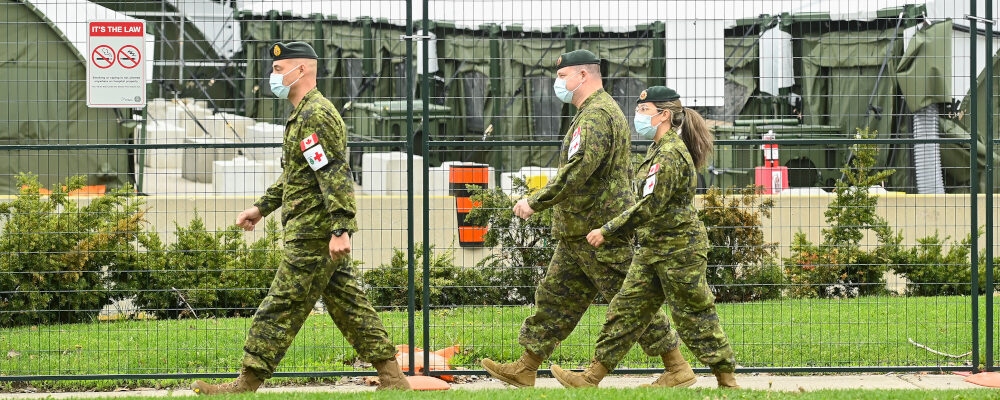Innovation policy has emerged as a hot topic in recent years, especially in regard to economic prosperity and great power conflict. One of the largest avenues of government research funding has traditionally been the defence sector, but its benefits can extend far beyond supporting the military and even the country’s security: it can be a powerful driver of economic development, research, and development in this sector largely aims at maturing new technologies from basic theoretical principles into proven capabilities that are successfully deployed in an operational setting.
There is a temptation among some political elements to view defence research as being essentially the same as spending on defence itself and that Ottawa should minimize its expenditures to focus on domestic priorities. The potential spinoff benefits aside, this is exceptionally foolish and akin to putting one’s head in the sand. Technological investment should also be seen as a way to provide early warning and understanding of emerging security threats. These may not even be purely military in nature—for example, maintaining expertise in biological warfare had important benefits during the COVID-19 response, such as improving personal protective equipment design. Even if the government does not choose to acquire capabilities to address a specific area, it can do so based on a fulsome understanding of the issues involved, or potentially develop a quicker response.
Frequently, direct government investments into high technology sectors are seen through the lens of opportunity costs—how the money could be better spent elsewhere to provide more benefit. This has certainly come to the fore recently in the investment of the Volkswagen manufacturing plant, where each job may have cost over $4.3M CAD in government subsidies.
Even more problematic is that these sorts of investments do not really improve Canada’s economic or technological competitiveness. For example, there is unlikely any intellectual property transfer for these deals to domestic firms, thus these plants should be seen more as a rental agreement for high-technology manufacturing jobs. This was made apparent by the recent threats by Stellantis to withdraw their proposed EV plant if Canada did not increase their subsidies.
But defence research investments tend to generate long-term economic benefits that outstrip their investment. In 2015, Ben Bernanke, former U.S. reserve Chairman, suggested that for every dollar that is invested by the U.S. government in defence research, it adds an additional $0.20 to $0.30 of private sector R&D due to the civilian spinoffs. There is a multiplier effect that can be harnessed for the public benefit, though it is often not immediately apparent—the maturation of a technological concept may take years, if at all.
However, when they do emerge, they can have immense effects, as the frequently mentioned examples of the internet or GPS illustrate. In Canada, the Defence Research Board and its successor, Defence Research and Development Canada (DRDC), have experienced noteworthy successes. The DRB and the National Research Council funding were critical for establishing the foundations of Canada’s computer and nuclear industries, as well as advancements in telecommunications and remote sensing.
In Canada, spending on R&D has slowly declined as a part of GDP, from 2.0 percent to 1.5 between 2000 to 2021. The government’s proportion has declined more precipitously, from 6.9 percent of total R&D in that time to 4.5 of the national total. In major economies like the United States, France, and Germany, the percentage has increased as their private and public sectors are making tangible efforts to transition to a knowledge-based economy.
Moreover, traditional models of development and investment will not suffice to address the existing and emerging defence technological environment. During the Cold War, governments were a key player in technological development. In 1986, defence R&D accounted for 32 percent of all defence spending. Now it is 12 percent. In real terms, areas with commercial viability enjoy sustainable private investment that dwarfs military spending: worldwide R&D spending on computing, software, internet and electronics accounted for approximately $340 billion dollars, compared to $20 billion for aerospace and defence in 2017.
Finally, the range of technologies relevant to defence has broadened. For example, two new domains of warfare have matured significantly over the past three decades: cyber warfare and space, which invite further investment. Given the range of potential threats and technologies it’s easy to see that no matter the investment being spent, the potential research needs will far outstrip the resources being allocated. Thus a system of effective prioritization of needs is essential for future success. This will require clear government leadership, in part through a careful assessment of the current scientific and threat landscape.

This is further complicated by the nature of technological development writ large, given the private sector’s preeminent role in innovation. On the whole, defence technologies no longer live in their own silos, from which the civilians benefit once they fill to the top and spill over into broader society as finished systems. Rather civilian R&D is as, if not more, of an important source of development than those funded by the military. The nature of this research has become much more decentralized as cutting-edge research, even in defence, often takes place across a number of allies.
Work in some commercially profitable areas, like AI, occurs completely divorced from any government funding at all. Firms such as Google own their own vertical silo. Instead, a properly resourced and implemented defence investment system can buttress civilian innovation pathways and potentially accelerate Canadian technological leadership in certain areas. Furthermore, ensuring Canadian participation in bilateral and multinational frameworks for defence technology development, like AUKUS pillar 2, will be critical for ensuring that Canadian research remains relevant to the cutting edge of their various fields.
Another facet that bears examination is the process by which investment is made is by no means efficient or effective. From its astounding heights from 1945 to 1980, the defence innovation system has fallen into significant disrepair. Perhaps the most critical failure is the inability of Canada to effectively harvest the promising technologies it develops into finished systems. While there are areas of “basic” research that Canada maintains a healthy level of expertise in, a key failing has been later down the line.
Many countries refer to a “valley of death” where promising new defence technologies are unable to be effectively incorporated into new systems. Canada’s valley looks more like a chasm, where very few promising technologies are ever being accepted into service.
The inability to incorporate Canadian-developed technologies into the CAF severely cripples the viability of the domestic defence industry, and, by extension, the efficacy of Canada’s defence research investments. The primary programs that are supposed to facilitate this process, such as the Build in Canada Investment Programs (BCIP) and the Innovation for Defence Excellence and Security (IDEAS), have not been effective at delivering technologies for widespread service. The factors behind this are manifold and include contradictory bureaucratic policies, the lack of funding that would allow the CAF to experiment, and a general skepticism for domestic systems. The lack of a strong market to sell these goods to is a key failure.
While this article has laid out a fairly pessimistic reality for Canada’s defence research landscape, it should not be discouraging. The foundations of the country’s R&D sector are strong and increasing funding and altering policies will build on this existing structure. Adding to the defence research budget can have much broader benefits for Canadian society. Improving this sector should be a priority for this government considering the potential windfall it may accrue.




